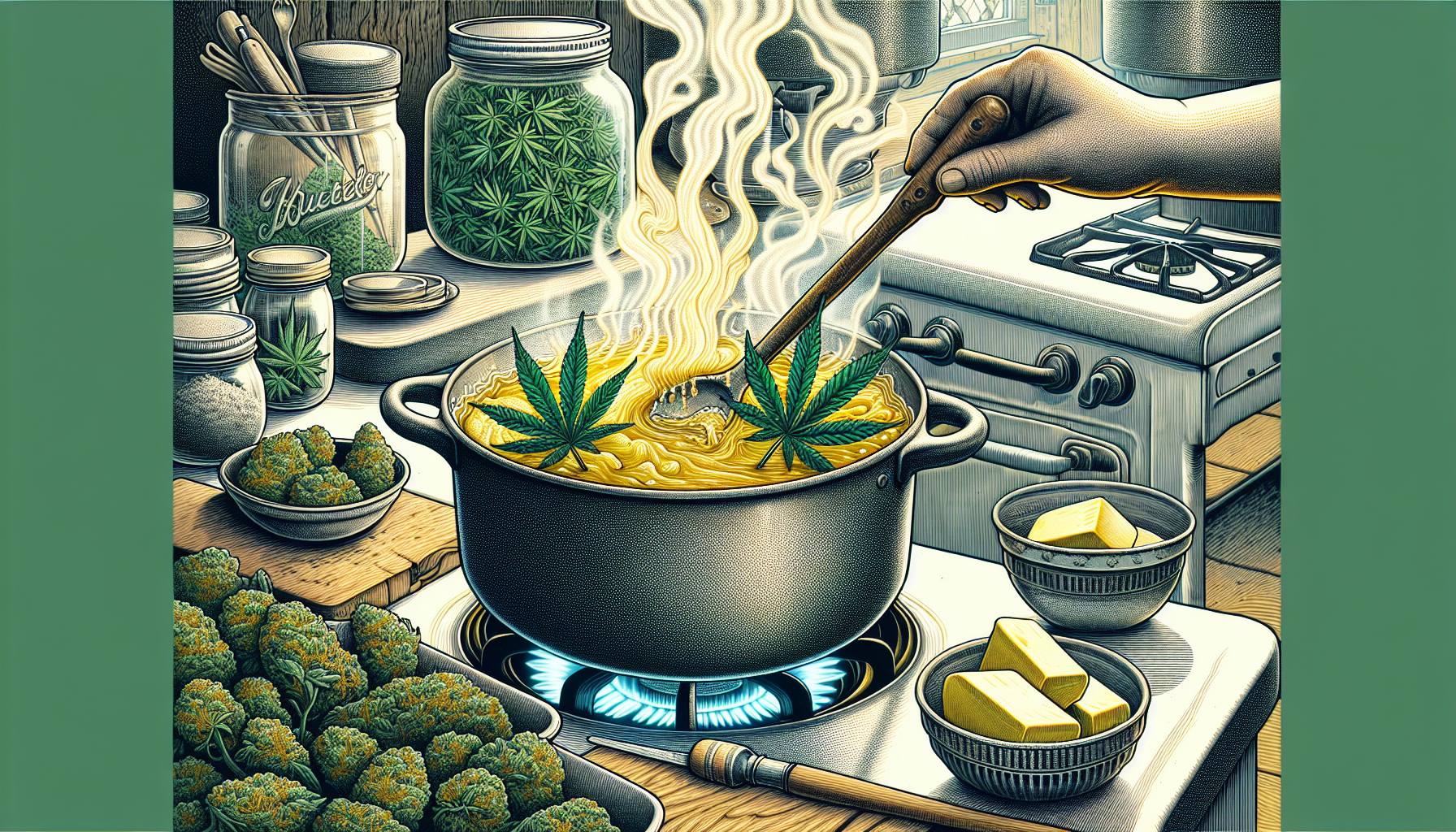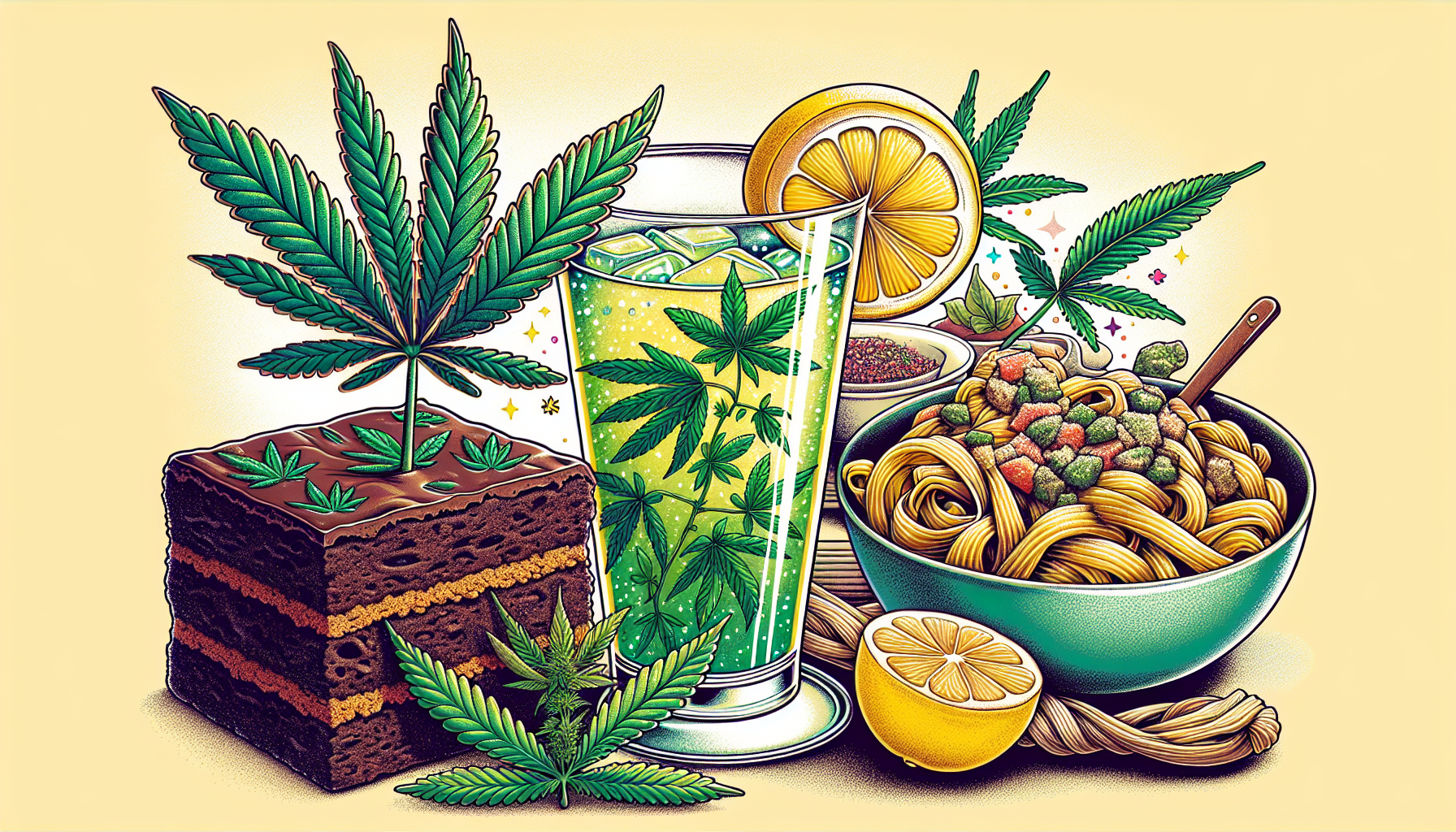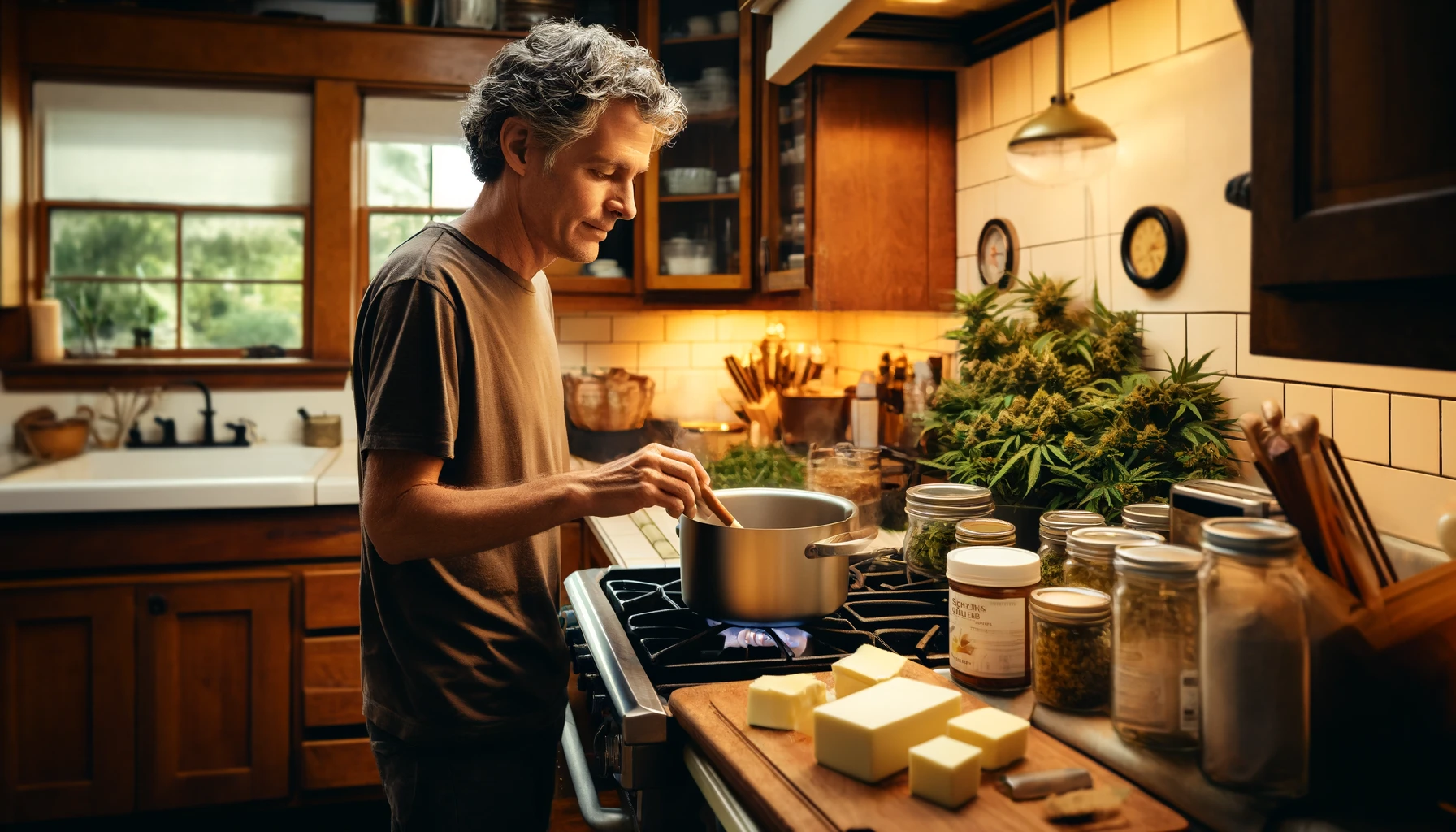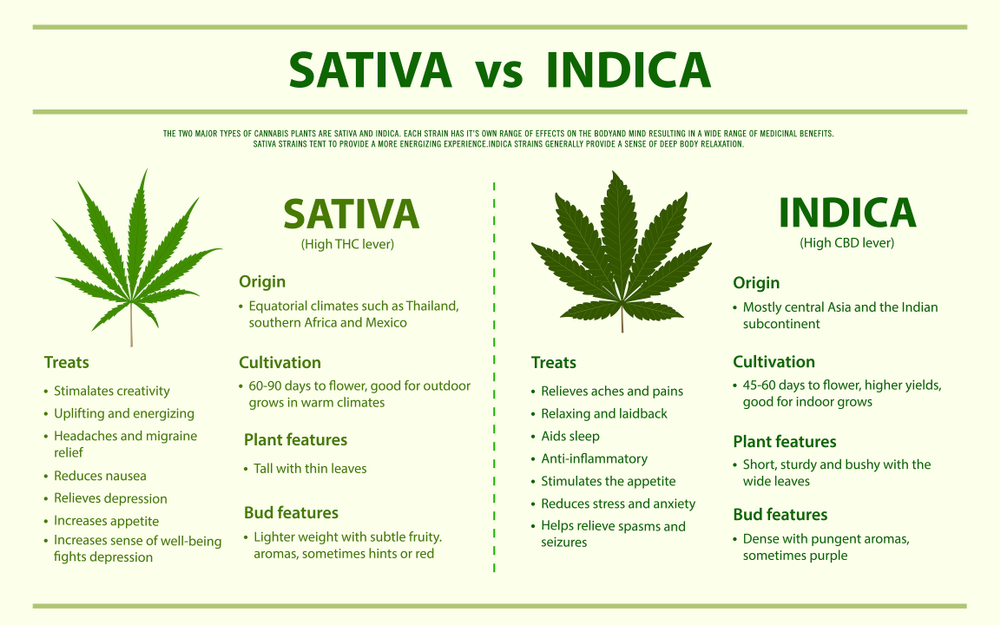If you’re searching for how to make edibles, look no further. We’ll guide you step-by-step in turning your favorite cannabis strains into delicious, potent treats. Discover the essentials of decarboxylation, the secrets to perfect cannabutter, and the key to precise dosing for a satisfying experience. Prepare to elevate your edible game with this practical walkthrough.
Key Takeaways
- Selecting the right cannabis strain is crucial for tailoring the edible experience to your taste and tolerance, with lower THC strains recommended for beginners and higher THC options for seasoned users.
- Decarboxylation is essential to convert non-psychoactive THCA into THC, using methods like oven baking for simplicity or sous vide for precision and consistency.
- After decarboxylation, infuse cannabis into fats like butter or oils or prepare tinctures for diverse consumption options, aiming for balanced dosing and safe storage to maintain potency and prevent unauthorized access.
Choosing the Right Cannabis Strain for Your Edibles

Imagine a palette of flavors and sensations at your fingertips, ready to be infused into your culinary masterpieces. The first brushstroke in your edible canvas is selecting the right cannabis strain. Think of it as choosing the perfect wine to pair with a meal – the strain sets the tone for the entire experience. For those just starting to dabble in the kitchen, strains with low to moderate THC levels are your best bet, providing a pleasant ride without overwhelming the senses. But for the cannabis connoisseurs among us, high THC strains beckon, promising a more profound journey for those with a heartier tolerance.
With such a smorgasbord of options, how do you decide? It’s all about personal preferences and the effects you’re aiming for. Some strains might whisk you away on a euphoric adventure, while others gently cradle you into a restful slumber. Your local dispensary is an encyclopedia of knowledge, ready to guide you through the forest of sativa’s uplifting buzz or the cozy cave of indica’s calming embrace.
Whether you’re making brownies for a fun get-together or a tincture for relaxing evenings, choosing the right strain is crucial for the best edible experience.
Decarboxylation: Unlocking the Power of Cannabis
Before you start melting chocolate or preheating the oven, there’s a little science we need to tackle – decarboxylation. It might sound like a tongue-twister, but it’s the magical process that awakens the full potential of your decarboxylated cannabis flower. Decarboxylation is like the ignition that starts the engine, transforming the non-psychoactive THCA in raw cannabis into the THC we know and love. This step is a non-negotiable ritual for creating edibles with the desired medicinal and recreational benefits.
So, strap on your lab coat and let’s get scientific with two of the most popular decarbing methods!
Oven Baking Method
The oven baking method is a classic for a reason – it’s simple and effective. Here’s how to do it:
- Preheat your oven to that sweet spot between 200-240°F. This temperature range is the playground where THCA swings into the arms of THC without the risk of overheating.
- Break your buds into larger pieces – think pea-sized, not powdered – to preserve those precious cannabinoids.
- Spread them out on a parchment-lined baking sheet and let the oven work its magic.
- After about 30-40 minutes, your kitchen will smell like a cannabis sanctuary, and the buds will have transformed into a deep brownish-green, signaling success.
But why the oven, you ask? It’s all about accessibility and ease. Most of us have an oven in our homes, and this method doesn’t require fancy equipment or ingredients – just cannabis, heat, and patience. Once your cannabis has been decarboxylated, you’re ready to infuse it into fats like butter or oil, which we’ll explore next. The oven method is a trustworthy companion on your edible journey, setting the foundation for potent and effective treats.
Sous Vide Method
For the culinary adventurers who demand precision in their potion-making, the sous vide method is your trusty sidekick. With a sous vide machine , you’re the commander of temperature control, eliminating the fear of scorching your precious greenery. The process involves:
- Sealing your cannabis in a bag
- Submerging it in a water bath
- Letting the sous vide machine maintain the perfect temperature for a controlled decarboxylation.
Why would you choose sous vide over the simplicity of the oven? It’s all about control and consistency. The sous vide method ensures every cannabinoid is activated without the risk of burning, which is especially crucial for those aiming for precise dosing in their edibles. Plus, it’s a discreet alternative, minimizing the tell-tale aromas that come with cannabis cooking. If you’re after a method that’s as consistent as it is stealthy, sous vide is your secret weapon.
Creating Your Cannabis Infusion: Cannabutter, Oils, and Tinctures

With your cannabis decarboxylated, it’s time to embark on the heart of the edible-making process – creating your cannabis infusion. Think of this as the base of your edible empire, the foundation upon which all your delicious dreams will be built. Whether you’re whipping up a batch of cannabis-infused butter, stirring a cauldron of potent oil, or crafting a versatile tincture, these infusions are the essence of your culinary creations.
Let’s dive into the methods that will turn your decarbed cannabis into the hero of your homemade edibles, making edibles that will impress everyone.
Making Cannabutter

Cannabutter is like the golden key that unlocks a treasure chest of edible possibilities. To create this essential ingredient, start by simmering your decarboxylated cannabis with butter or coconut oil, allowing the fats to lovingly embrace the cannabinoids. The magic ratio? Aim for about 10 grams of decarbed flower for every cup of butter or oil. This will ensure a balanced blend of potency and flavor.
As the mixture simmers on low heat for a few hours, you’re not just making cannabutter; you’re creating a base for your cannabis to enhance any dish. After straining and storing in a sealed jar in the fridge, your cannabutter can star in anything from brownies to brioche for up to two months, or even six if frozen. Voilà – your homemade cannabutter is ready to elevate your culinary creations.
Crafting Cannabis-Infused Oils

But what if butter isn’t your thing? Enter cannabis-infused oils, the versatile cousin that plays well with everything from salads to sautés. The alchemy begins by heating your cooking oil of choice with the decarboxylated cannabis. A good starting point is a one-to-one ratio of one cup of oil to one cup of dried cannabis. Whether you’re partial to olive oil’s heartiness or coconut oil’s sweetness, the process is the same – gently heat and infuse. And if you’re looking for a more concentrated option, consider using cannabis oil as an alternative.
These oils are versatile, enhancing your dishes with a hint of flavor without being too strong. They can elevate cookies and salad dressings, and any excess can be stored in the fridge for later use.
Preparing Cannabis Tinctures
Sometimes, you want the power of cannabis without the heaviness of fats, and that’s where cannabis tincture shines. These potent potions are made by soaking decarboxylated cannabis in high-proof alcohol or glycerin, extracting all the good stuff into a liquid form. Tinctures are the chameleons of the cannabis world – add a few drops to your morning tea for a gentle lift or a splash into your evening cocktail for a mellow nightcap.
The beauty of tinctures lies in their longevity and ease of use. A few drops can go a long way, and when stored in the fridge, they maintain their efficacy for a cozy eternity. Whether you’re a busy bee looking for a quick cannabis fix or a culinary artist seeking a new medium, tinctures offer a streamlined, versatile path to infusing your life with a touch of green.
Cooking and Baking with Cannabis: Tips and Techniques
Ready to turn up the heat and get creative in the kitchen? Cooking and baking with cannabis is an art form that marries flavor with function. To achieve this alchemy, you’ll need to master the dance of thorough mixing, ensuring the even distribution of THC throughout your edible creations.
But it’s not just about mixing; it’s about dosing with intention. The golden rule? Start low and go slow. Edible effects can sneak up on you like a cat burglar in the night, so patience is your best friend. Keep a close eye on your temperatures to preserve the integrity of your infusions, and always remember that the true joy of edibles is in the journey, not just the destination.
So grab your apron, unleash your inner chef, and let’s start cooking up some cannabis-infused delights!
Dosage Calculation and Safe Consumption
Navigating the waters of dosage calculation can feel like a high-stakes game of darts, but fear not – with a bit of know-how, you’ll hit the bullseye of safe consumption every time.
The key to unlocking the mystery of potency in your edibles lies in understanding the THC content of your starting material. If you don’t have lab-tested flower, a good rule of thumb is to assume an average potency of 10% THC. However, for the more humble brick weed, think more along the lines of 3%.
The formula for a happy edible experience is simple:
- Divide the total milligrams of THC in your batch by the number of servings.
- If you find yourself with an overly potent concoction, you can always dial it back by blending in non-infused ingredients to soften the punch.
- Conversely, if your recipe needs a boost, sprinkle in some decarboxylated kief or hash oil to amp up the effects.
- Remember, the effects of edibles take their sweet time to emerge, so give it at least an hour or two before contemplating another nibble.
Safe and enjoyable consumption is the name of the game, and with these guidelines, you’re sure to win.
Creative Recipes for Cannabis Edibles

The world of cannabis edibles, including marijuana edibles and weed edibles, is your oyster, and it’s time to explore the vast ocean of recipes that await.
For traditionalists, pot brownies and cookies are a comforting place to start. They can be easily made with your freshly crafted cannabis butter or oil. But why stop at sweets? A dollop of cannabutter can transform a classic cornbread mix into a savory treat that will have your guests returning for seconds.
If you’re in the mood for something that warms you from the inside out, here are some cannabis-infused options to try:
- Cannabis tea : a hug in a mug, effortlessly infused with a bit of decarboxylated cannabis and a fat source.
- Cannabis gummies : a fun and fruity way to enjoy your tincture infusions.
- Cannabis bacon : a game-changer for brunch enthusiasts, with the bacon’s fat naturally absorbing the cannabinoids during cooking.
With such a smorgasbord of options, every meal can be an opportunity for cannabis consumers to indulge in their cannabis culinary skills using cannabis flower.
Storing and Preserving Your Cannabis Edibles
After pouring your heart into creating these edible gems, the last thing you want is for them to lose their sparkle. Proper storage is the guardian of freshness, potency, and safety in your cannabis treats. Keeping them in a cool, dry place with a humidity level of around 60% is like giving them a cozy blanket to snuggle in. Airtight silicon containers or glass jars are your best friends here, providing a fortress against air and moisture that can dull the shine of your cannabinoids.
But it’s not just about maintaining quality; it’s about safety too. Always use child-resistant packaging and clear labeling to keep your edibles out of the hands of children and pets. If you’ve whipped up perishable goodies, a refrigerator lock box can be your culinary safe, keeping your creations secure and fresh.
By following these storage tips, you ensure that each bite of your homemade edibles continues to embody the love and care you baked into them.
Troubleshooting Common Edible Issues
Even the best plans can hit bumps, but don’t let that disrupt your edible journey. Troubleshooting may be in order if your edibles aren’t hitting the mark. Temperature is a common issue – too high during decarboxylation or infusion could reduce potency or lead to an unexpected sedative effect by converting THC into CBN. Keep an eye on the thermometer, and remember, patience is key.
Another challenge might be the dreaded “green” taste that can accompany homemade weed edibles. The secret to avoiding this is gentle handling – when straining your infused butter or oil, resist the urge to squeeze the last drops from the plant material. This extra pressure can release unwanted chlorophyll and other plant compounds that can leave a bitter taste in your mouth. With a light touch and careful temperature management, you’ll create edibles that are as delicious as they are delightful.
Make Edibles with Hello Cannabis!
As we wrap up this culinary cannabis quest, remember that making edibles is a journey of personal expression, full of opportunities to tailor your treats to your taste and desired effects. From choosing the right strain to mastering decarboxylation, infusing your base, and fine-tuning your recipes, you now have the tools to craft edibles that will enchant your palate and elevate your experiences.
To help you create the best possible edibles, we’ve compiled some of the best products from Hello Cannabis:
- Big Tree – Bikini Bottom (Indica) :
- CBX – Private Reserve OG (Indica) : A boutique blend providing an exceptional relaxation experience.
- Fig Farms – Rainbow Runtz #3 (Indica) : Known for its unique terpene profile and deep relaxation.
- Alien Labs – Xeno (Hybrid) : Offers creativity and energizing effects, perfect for an uplifting edible experience.
- Cannabiotix – Highuasca (Hybrid) : Designed to enhance creativity and happiness.
- Yummi Karma – Birthday Cake Tincture (1000mg) : A high potency option for a deliciously relaxing edible base.
- Mary’s Medicinals – Formula 4:4:2:1:1 Tincture (200mg) : A balanced tincture for tailored therapeutic effects.
- Kurvana – Paradise 1:1:6 Tincture (900mg) : Offers purity and potency for a clean, controlled edible experience.
- Care by Design – CBD 1:1 Drops (15ml) : Perfect for a balanced THC and CBD effect in your edibles.
- Beard Bros Pharms – High CBD 20:1 Tincture (30ml) : Ideal for those looking for a high CBD content with minimal THC.
So, go forth with confidence, creativity, and a dash of caution. Embrace the process, savor each step, and enjoy the delicious rewards of your homemade cannabis edibles.
FAQ
What’s the best way to determine how much cannabis to use in my edibles?
To determine how much cannabis to use in your edibles, estimate the THC content of your cannabis and use the ratio of 10 grams of decarboxylated cannabis per one cup of butter or oil as a guideline, adjusting based on the potency of the material and your desired effects.
How can I avoid making my edibles too strong?
To avoid making your edibles too strong, carefully calculate the dosage and divide the total THC by the number of servings. If it’s too potent, mix in non-infused ingredients to lessen the strength, and always start with a small serving to gauge the effects before consuming more.
Can I make cannabis edibles without the strong cannabis flavor?
Yes, you can make cannabis edibles without the strong cannabis flavor by avoiding overhandling the plant material during straining to prevent the release of compounds that contribute to the strong taste.
How do I store my cannabis edibles to maintain freshness and potency?
To maintain the freshness and potency of your cannabis edibles, store them in a cool, dry place in airtight containers. Consider using child-resistant packaging and labeling them clearly. If they are perishable, refrigerate or freeze them, and if in the fridge, use a lock box for added safety.
What’s the difference between using cannabutter and tinctures in my edibles?
The main difference between using cannabutter and tinctures in edibles is that cannabutter is fat-based and used for baking, while tinctures are alcohol-based and can be added directly to foods without cooking. It’s a matter of whether you prefer the ease of using tinctures or the traditional baking process with cannabutter.




